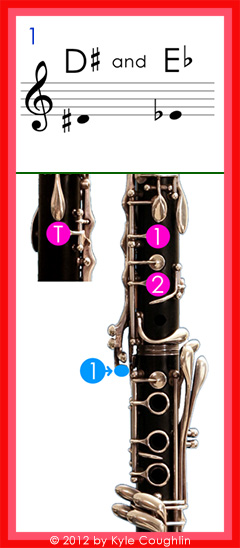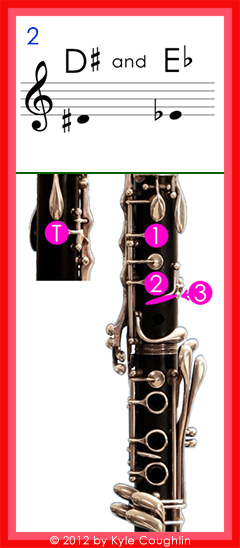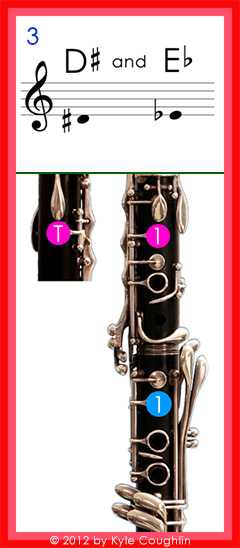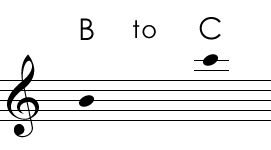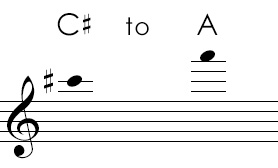Home - How-To Section - Low Register Clarinet Fingering Chart
How to Play Low E flat and D sharp on the Clarinet
There are three different fingerings for low E flat and D sharp on the clarinet. The two pitches are the same and are called enharmonic equivalents. To see the fingerings for other pitches, select one of the note images in the chart below.
Purchase the printable versions of these fingering charts.
View the interactive upper register clarinet fingering chart.
View the interactive altissimo register clarinet fingering chart.
Notes on the fingerings
Fingering #1 is standard and should be your first choice when playing E flat in the lower register. Fingering #2 is useful for moving quickly from E flat to F. Fingering #3 is best when you have to move quickly from low B flat to E flat. For this fingering to work, the bridge key of your clarinet must be lined up perfectly. The bridge key consists of the two metal keys that connect the upper and lower joints of the instrument.
The Beginning Clarinet Songbook, by Kyle Coughlin
Learn how to play the clarinet with a fun, step-by-step approach to the instrument. The Beginning Clarinet Songbook features many catchy, easy to play songs and duets that can be used as an introductory method or a compliment to your other clarinet books. Visit the Songbook pages for free examples, images, and helpful suggestions.
Clarinet Fingerings in the Low Register
Select a note below to see the fingering for each pitch, hear what it sounds like, and view alternate fingerings.
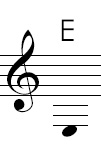


























More Educational Tools from Kyle Coughlin
Learn all about rhythm and improve your sight reading. Rhythm-In-Music.com is an interactive website that teaches all of the fundamental aspects of rhythm, covering beat, tempo, meter, time-signature, and all note values. It is an online version of Kyle Coughlin’s book The Fundamentals of Rhythm, featuring over 450 different rhythm patterns for practice, with audio recordings of each pattern.
View the interactive upper register clarinet fingering chart
View the interactive altissimo register clarinet fingering chart
If you like these free music tools, please spread the word!
Follow Kyle Coughlin Music








